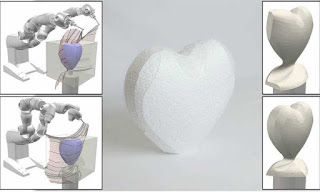First-of-a-kind electronic skin mimics human pain response
Electronic skins that perform the same sensory functions as human skin could mean big things for the fields of robotics and medical devices, and scientists are not solely focused on just the pleasant ones. Researchers in Australia have succeeded in developing an artificial skin that responds to painful stimuli in the same way real skin does, which they see as an important step towards intelligent machines and prosthetics.
It mightn’t seem like the most practical of goals, but researchers have been working to develop electronic skins that allow robots and prostheses to feel pain for quite some time. These technologies could enable amputees to know if they are picking up something sharp or dangerous, for example, or could make robots more durable and safer for humans to be around.
The researchers behind the latest breakthrough, from Australia’s Royal Melbourne Institute of Technology, believe they have created a first of-a-kind device that can replicate the feedback loop of painful stimuli in unprecedented detail. Just as nerve signals travel to the brain at warp speed to inform it that we've encountered something sharp or hot, the new artificial skin does so with great efficiency, and with an ability to distinguish between less and more severe forms of pain.
“We’ve essentially created the first electronic somatosensors – replicating the key features of the body’s complex system of neurons, neural pathways and receptors that drive our perception of sensory stimuli,” says PhD researcher Md Ataur Rahman. “While some existing technologies have used electrical signals to mimic different levels of pain, these new devices can react to real mechanical pressure, temperature and pain, and deliver the right electronic response. It means our artificial skin knows the difference between gently touching a pin with your finger or accidentally stabbing yourself with it – a critical distinction that has never been achieved before electronically.”
The artificial skin actually incorporates three separate sensing technologies the team has been working on. It consists of a stretchable electronic material made of biocompatible silicone that is as thin as a sticker, temperature-reactive coatings that transform in response to heat, and electronic memory cells designed to mimic the way the brain stores information.
“We’re sensing things all the time through the skin but our pain response only kicks in at a certain point, like when we touch something too hot or too sharp,” says lead researcher Professor Madhu Bhaskaran. “No electronic technologies have been able to realistically mimic that very human feeling of pain – until now. Our artificial skin reacts instantly when pressure, heat or cold reach a painful threshold. It’s a critical step forward in the future development of the sophisticated feedback systems that we need to deliver truly smart prosthetics and intelligent robotics.”
With further work, the team imagines the electronic skin could one day also be used as an option for non-invasive skin grafts.





Interesting
ReplyDelete